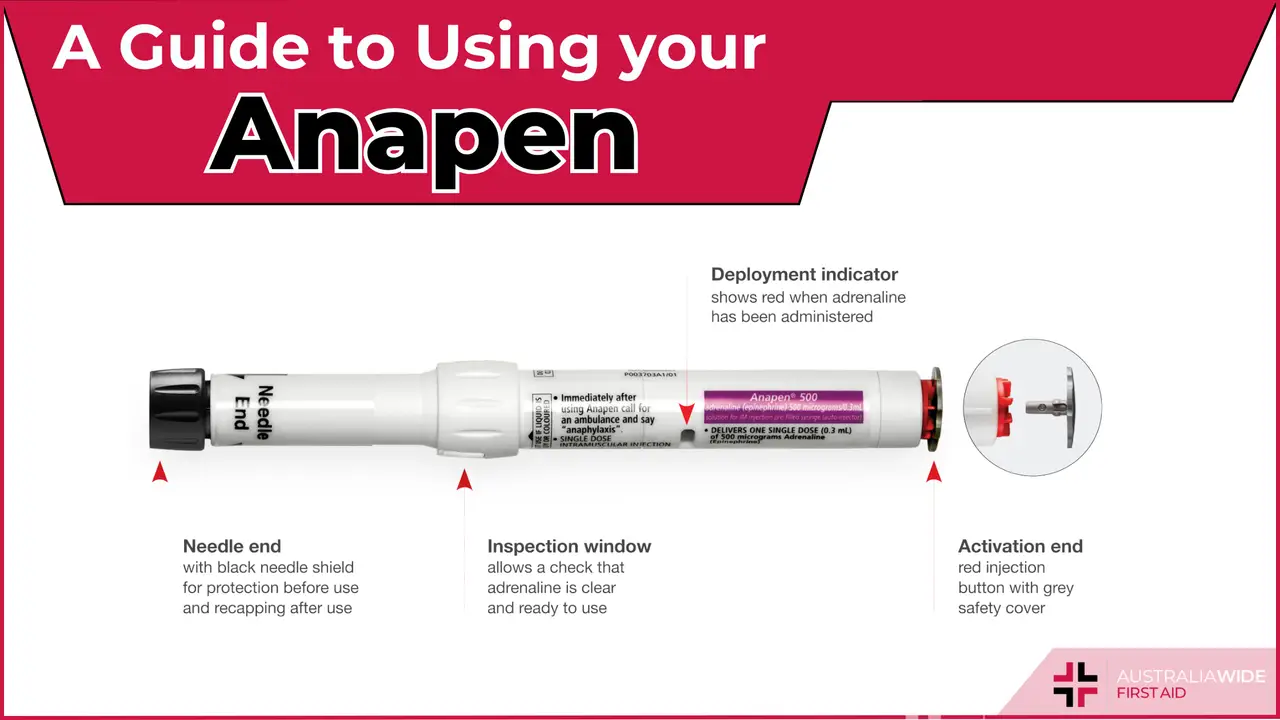Anaphylaxis and Anapen: A Guide to Using Your Auto-Injector for Allergy Emergencies


In 2021, the Therapeutic Goods Administration approved a new version of an adrenaline auto-injector, the Anapen. The Anapen treats anaphylaxis through the delivery fixed dose of adrenaline to reduce the severity of a severe allergic reaction, reducing the likelihood of hospitalization and even death in young children.
Anapen is an alternative treatment option to the Epipen, with patient preference, ease of use, and previous experience determining whether the Epipen or Anapen is preferred for those who experience severe allergic reactions and anaphylaxis.
Although the Anapen and Epipen auto-injectors look similar, they have vastly different administration techniques. For this reason, it is important that you have adequate knowledge of how to administer the new Anapen to prevent incorrectly administering the life-saving treatment.
This guide will provide you with a comprehensive overview of the Anapen, anaphylaxis, and how to administer the Anapen as well as anaphylaxis first aid in Allergy Emergencies.
The Anapen is a new adrenaline autoinjector used to deliver a dose of epinephrine, also known as adrenaline, to treat anaphylaxis in emergency situations. Typically administered in the outer-thigh region, the Anapen delivers a single fixed dose of adrenaline intramuscularly which can greatly reduce the risk of hospitalisation and even death if administered early enough. The autoinjector can be administered by anyone, including those with no medical training.
Adrenaline is used to relieve the immediate symptoms of anaphylaxis. When experiencing an allergic reaction, the body naturally releases adrenaline to open blood vessels and improves blood pressure as well as widen the airways to improve breathing. Injecting adrenalin helps in this natural response. Adrenaline inhaled or ingested is ineffective as it can be broken down by stomach enzymes, hence why it must be injected.

People who have been diagnosed with a severe allergy and risk of experiencing anaphylaxis should always be carrying an auto-injector with them. If a person is experiencing anaphylaxis, an adrenaline auto-injector, such as the Anapen, should be administered immediately. To administer the Anapen:
In addition to administering the Anapen, anaphylaxis first aid should be administered which includes:
For more information on administering adrenaline to treat anaphylaxis, explore our Anaphylaxis and Adrenaline Guide Sheet.

An allergy is an immunological response to a substance that can cause symptoms that range from mild to severe and life threatening.
Anaphylaxis is a severe and potentially life-threatening allergic reaction that occurs when the immune system registers the allergen or ‘trigger’ as dangerous. Despite the substance being harmless to most, the person’s immune system will trigger the release of a chemical in the body called Histamine to try and eliminate the “dangerous” trigger. Histamines can cause a number of severe and even life -threatening responses including vasodilation and bronchoconstriction.
Vasodilation occurs when the blood vessels widen and allow an increased amount of blood flow. This leads to a sudden drop in blood pressure which can be dangerous. In addition to this, histamines can alter heartbeat rhythm, which affects the amount of blood and rate of blood being pumped to the body. Bronchoconstriction is the narrowing of the airways which makes breathing difficult. This can lead to Pulmonary Edema, a condition where fluid leaks into the lungs and cause further swelling.
The most common allergens to trigger anaphylaxis are:
Occasionally, the allergens which cause anaphylaxis in a person cannot be identified, which is referred to as idiopathic anaphylaxis.
If you or a person you know has a serious allergy or has previously experienced anaphylaxis, there are several methods to reduce your risk of experiencing it again. This includes:

When exposed to an allergen, symptoms can range from mild allergy reactions to anaphylaxis. Mild allergy symptoms include:
Symptoms of a severe reaction and anaphylaxis include:
Anaphylaxis can occur within minutes but can take anywhere up to two hours after exposure to occur. If a person is displaying any of the severe symptoms, first aid should be administered immediately and proceed to find immediate medical attention.
There are several factors that can increase the severity of an allergic reaction and the risk of experiencing anaphylaxis. This includes:
The Anapen is a life-saving device that can be used on anyone experiencing anaphylaxis. Not only is it important to know the signs and symptoms of anaphylaxis but also to understand how to use an Anapen to administer it correctly. With the right preparation and knowledge, you can feel confident in your ability to treat an anaphylactic reaction and prevent making mistakes that could have serious consequences. To learn more about treating anaphylaxis as well as first aid for other medical emergencies, enrol in one of our first aid courses near you:

October 2, 2013
In an asthma or anaphylaxis emergency you should know the symptoms, remove triggers, and know how to respond. Read on to understand these important aspects in the context of such an emergency.

May 7, 2024
Asthma, a chronic respiratory condition affecting millions worldwide, is often shrouded in myths and misconceptions. Despite how common it is, there is a distinct lack of common knowledge. This is leading to potential mismanagement and unnecessary anxiety for those living with asthma.

February 19, 2024
For many Australians, our city and outdoor lifestyles come with a hidden challenge – dust allergies. Dust mites, pollen, and other airborne particles can trigger allergic reactions, affecting a significant portion of the population.